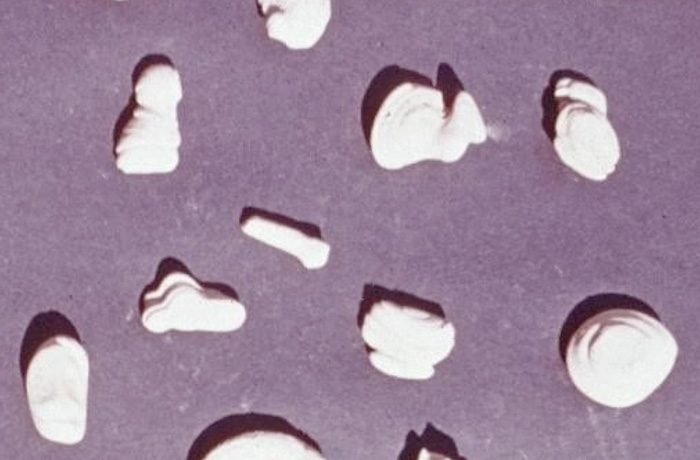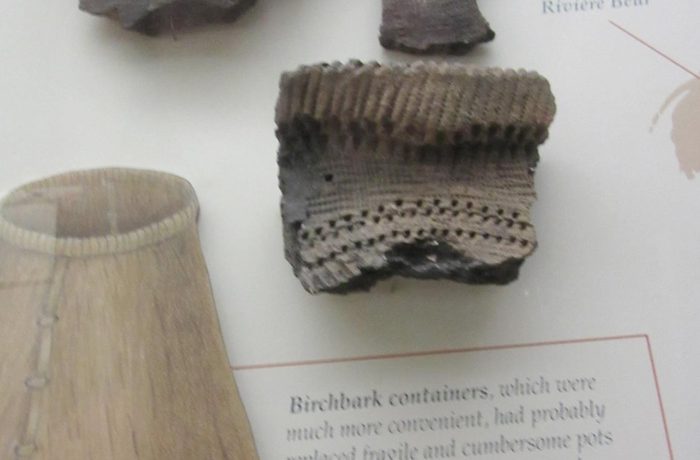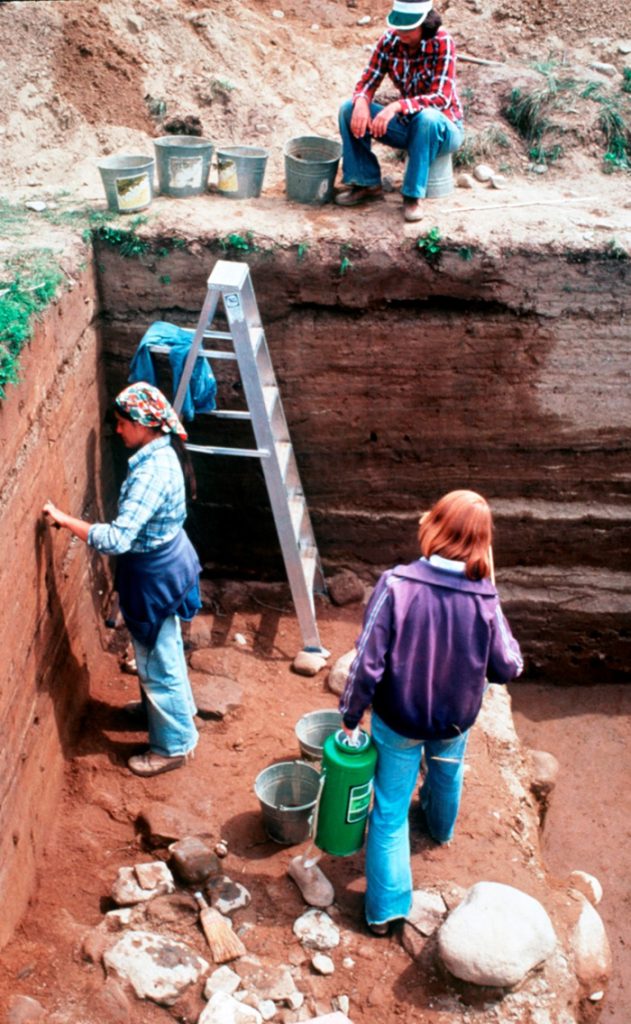Materials required: shoe or small box, sand, objects or fragments that reflect different time periods, a number of popsicle sticks for each student, projector, whiteboard, logbook, stickers
View the animation of Joe Mike Augustine and his discoveries.
What did Joe Mike Augustine discover? Why was it so important? Artifacts explain how a people lived, how their culture developed, and what was sacred to them. Artifacts found from long ago need to be repatriated. In other words they need to go back to the people that originally used or created them. They need to be stored in a safe place under good climatic conditions where they can be protected, preserved and shared with the public. Here is a chance to try your own archaeological dig.
Day 1
Have students bring in a small box about the size of a shoe box. You will also need a large container of sand or earth or access to one (a pail will work well) and enough popsicle sticks for each person. Divide the class into pairs.
Begin by asking the students: if they wanted to figure out what happened hundreds of years ago, how would they do it?
- Brainstorm some ideas and then make a list of suggestions on the board. It could include storytelling, looking at old maps, old family photographs, looking through newspaper articles, stories from Elders.
Now explain that one way to learn about the past is through archaeology — the study of human history through the excavation of sites and the analysis of artifacts.
On the whiteboard, show the class photo of spear points in this lesson and ask them how these might have been found.
- Were these from a long time ago?
- How do you know?
- What were they created from?
- What tools were used to make them?
- Do any of them appear to have been made more recently than the others? Why?
- If you were going to find them in the ground, where would the more recent spear points be located?
- Do we use spear points today? Doing what activities?
- Are they made of stone (chert) like these are?
- If these new spear ends were part of an archaeological site, where would they be located?

Now read the section of the Teacher’s Notes on the yearly life cycle of Waponahkiyik and show the students the picture of the Wolastoqey artifacts above. Explain that it is not always clear what an artifact was used for. Often artifacts are broken and must be put together like the one below.
Tell each pair that they are going to build an archaeological site in their shoe box or other container.
- Tell them to listen closely to what you are going to read or tell them about the life cycle of Indigenous peoples. They are to listen for clues about what Indigenous people used or created during their seasonal life cycle.
- Ask the students to bring in a couple of artifacts that could create a story about a particular season when Indigenous peoples were planting, hunting or fishing. It could be a bone, a tool, a piece of the environment, something that was used to hold or cook what had been caught. It can be the whole item or a fragment of the item. There are several ideas from the notes on the yearly cycle that have been mentioned above.
- Have both members of each pair choose the same season.

Day 2
Have the pairs of students share the artifacts they have brought in with each other but not the whole class.
- Ask them which could be the oldest and which could be the newest artifact.
- Which of these artifacts would we encounter first if we were involved with an archaeological dig and started digging?
- Which would we encounter last?
Explain that during people’s daily activities, artifacts got lost, dropped, or discarded in trash piles. Then, over time, they were covered over as sediments (dirt or water) blew in or washed over them. Artifacts became buried under a layer of dirt. As they are uncovered, each stratum (level) of dirt relates to a different time period. As archaeologists conduct an excavation, they carefully (with small tools) remove one layer of soil at a time. The artifacts and the strata at the top are going to be more recent than the layers below it. This is called the Law of Superposition.

Also, explain that when archaeologists are excavating, they are not only looking for artifacts, they are also looking for what happened near these artifacts. For example, some charcoal may indicate there was a fire pit nearby, or a stain in the soil might indicate that something was killed at this spot. These features help to explain what happened at that particular site. As all the artifacts are cleaned and catalogued, the record of where they were found is tied to the artifact by giving them a catalogue number. Removed artifacts need careful identification before having their geofracture removed.
- Have the pairs of students decide on a story about where their artifacts were found and what was nearby. Have them write it down.
- Then have them bury the artifacts (in the bucket) using the Law of Superposition and making sure they leave some clues as to the land features around the artifacts. For example, shells could indicate a beach; seeds could indicate a garden; stones or roots the forest. If the artifacts are tools, the types of stone and bone tools found can help us understand the technology for making them. This could include how they hunted, fished, or gathered various animals, fish, and plants and how they traded for materials.
- When this is completed, have them join another pair.
- Using the popsicle sticks, have each pair carefully remove the dirt and record any artifacts from the other pair, their location in the box (what they were next to), and what was above or below them in the strata.
- Apply a sticker to each artifact as it is uncovered to indicate this.
- After the dig is completed, have the pair of archaeologists hypothesize how long each artifact could have been here. See if the pair can draw any conclusions about what events were taking place at their site. For example, how building a dam in recent times would affect artifacts becoming displaced.
- Compare each pair’s answers with the story the original pair have created.
Evaluation
Based on what they have found, have the whole class draw some conclusions about the Seasonal Life Cycle of the Waponahkiyik. Record these for future use.

Ask the students: What possible artifacts can you see in this picture?
Ask students how they would interpret the following statements:
To us land was sacred, like everything else in the world. We saw it as sacred because it gave life to us and to every other living thing. To live anywhere other than in our own land was unthinkable. Weren’t we created in this very land? We could no more sell it than we could sell the water or the air.
Dean B. Bennett, Maine Dirigo: “I Lead” p. 41
Everything that casts a shadow deserves respect. Do not waste life. We harvest with love in our hearts. The spirits of water and land join us in our harvest.
Clifford Paul, Moose Management Co-Ordinator, Unama’ki Institute of Natural Resources 2021




